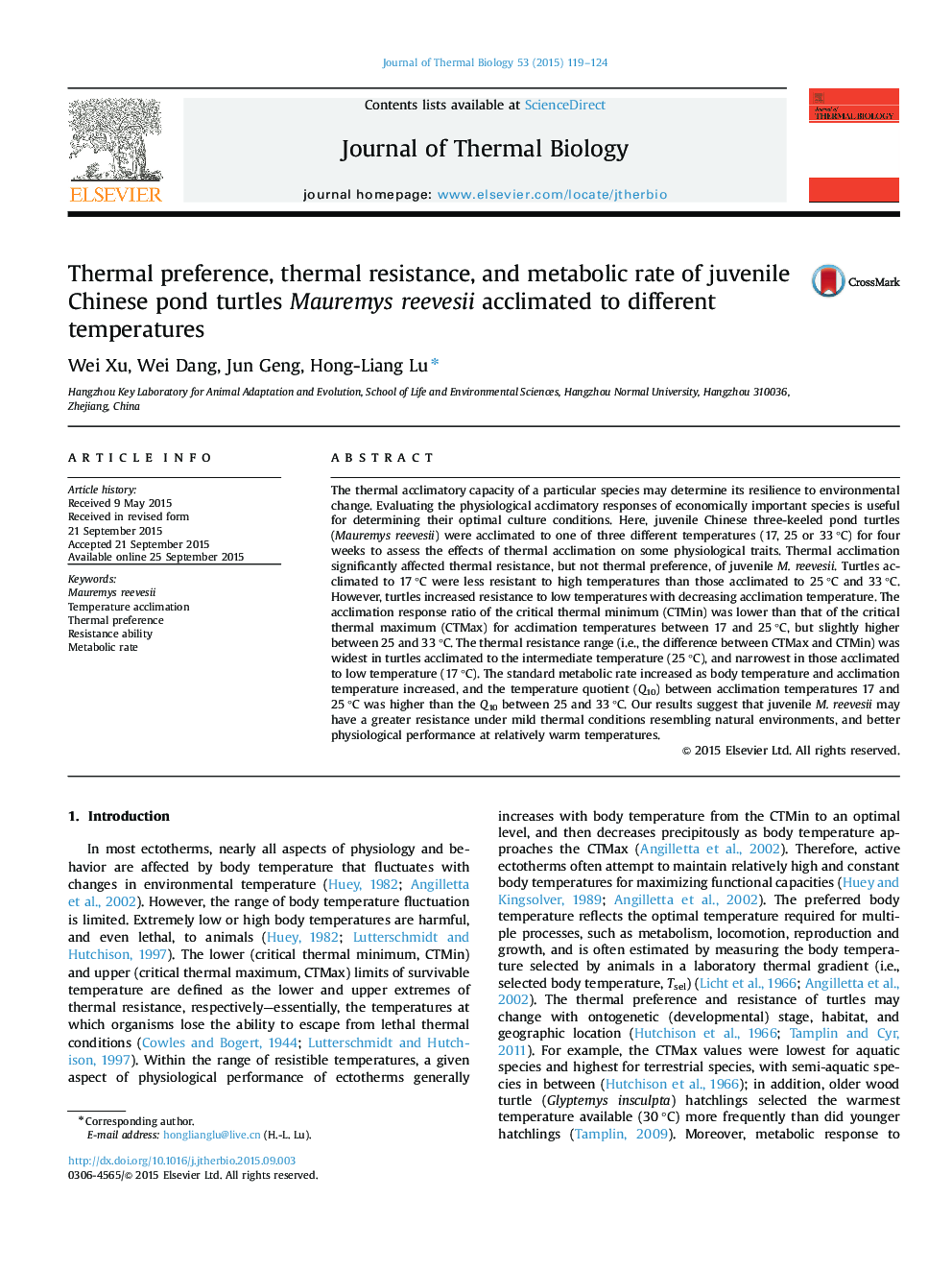| کد مقاله | کد نشریه | سال انتشار | مقاله انگلیسی | نسخه تمام متن |
|---|---|---|---|---|
| 2842785 | 1571093 | 2015 | 6 صفحه PDF | دانلود رایگان |

• Thermal acclimation did not change thermal preference of juvenile turtles.Turtles decreased low-temperature resistance with increasing acclimation temperature.Juvenile turtles have greater resistance ability under mild thermal conditions.Juvenile turtles have better physiological performance at warm temperatures.
The thermal acclimatory capacity of a particular species may determine its resilience to environmental change. Evaluating the physiological acclimatory responses of economically important species is useful for determining their optimal culture conditions. Here, juvenile Chinese three-keeled pond turtles (Mauremys reevesii) were acclimated to one of three different temperatures (17, 25 or 33 °C) for four weeks to assess the effects of thermal acclimation on some physiological traits. Thermal acclimation significantly affected thermal resistance, but not thermal preference, of juvenile M. reevesii. Turtles acclimated to 17 °C were less resistant to high temperatures than those acclimated to 25 °C and 33 °C. However, turtles increased resistance to low temperatures with decreasing acclimation temperature. The acclimation response ratio of the critical thermal minimum (CTMin) was lower than that of the critical thermal maximum (CTMax) for acclimation temperatures between 17 and 25 °C, but slightly higher between 25 and 33 °C. The thermal resistance range (i.e., the difference between CTMax and CTMin) was widest in turtles acclimated to the intermediate temperature (25 °C), and narrowest in those acclimated to low temperature (17 °C). The standard metabolic rate increased as body temperature and acclimation temperature increased, and the temperature quotient (Q10) between acclimation temperatures 17 and 25 °C was higher than the Q10 between 25 and 33 °C. Our results suggest that juvenile M. reevesii may have a greater resistance under mild thermal conditions resembling natural environments, and better physiological performance at relatively warm temperatures.
Journal: Journal of Thermal Biology - Volume 53, October 2015, Pages 119–124